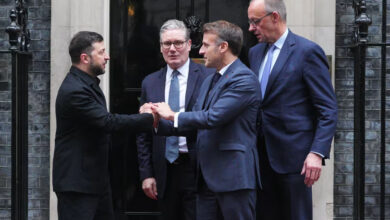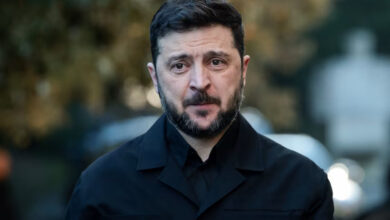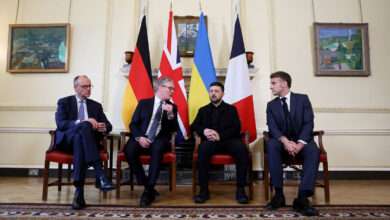
Europe’s drift to the right has been a long journey that’s seen the continent’s mainstream increasingly accommodate people with Euroskeptic views that were once fringe.
The projected gains for the hard right in the European parliamentary elections may seem modest in terms of pure numbers, but they are significant.
The results represent a major challenge to the pro-Europe mainstream officials who dominate the institutions of the European Union.
The advances chalked up by far-right parties may not be unexpected, and they don’t pose an existential crisis for the EU. But they show how the Euroskeptic right could, in the coming years, tighten its grip on the direction of the union.
Over the next 24 hours, the parties of the center – projected to remain the largest bloc in the European Parliament – will likely talk of a “grand coalition” to counter the rise of the far right. And while the far right is on course to make large gains, the center parties remain ahead.
On paper, these pro-EU parties can claim victory. On numbers alone, the centrist coalition has held. The center-right European People’s Party, the center-left Socialists and Democrats, and the liberal Renew Europe are the three largest groups in the European Parliament. When you throw the pro-Europe Greens into that, the center is by far the largest block.
Even when you take into consideration gains for the hard-right European Conservative Reformers and Identity and Democracy, it still leaves the mainstream, pro-Europe center with a healthy majority in parliament.
The course of European politics, however, is not necessarily set inside the European Parliament and it’s not clear that the centrist bloc would even want to work together.
While these centrist groups are all pro-EU, they differ on all manner of policies. For those on the center right, domestic political shifts to the hard right could make working with the hard right increasingly attractive at a European level.
This might create difficulties in appointing the next European Commission – the executive branch of the EU – which sets the political direction of the bloc. The deadline for this is months away, which leaves a lot of time for horse-trading, which could see elements of the center right and hard right cooperate.
The same dynamic could play out when the parliament comes to vote on policy. Coalitions are not formal in the EU Parliament, rather, lawmakers vote on an issue-by-issue basis. It’s not implausible that the center right could vote with the left on issues like support for Ukraine, but then work with the hard right on immigration and climate policy.
It’s not just politics at the European level that will affect how these groups might work together in Brussels. The domestic politics back in member states will inevitably put pressure on how those elected to the European Parliament cooperate with their colleagues.
Of the 27 EU member states, 13 heads of government currently belong to European parties on the right. A new government is due to form in the Netherlands, which could be led by a member of ID. There are other European leaders who are not a member of any European party, but are broadly sympathetic to ideas from the right.
French President Emmanuel Macron has responded to the projected crushing loss to his far-right rival Marine Le Pen by dissolving parliament and calling elections later this month.
Le Pen has already forced Macron to move a long way to the right in France, with his government taking on increasingly anti-immigrant and anti-Islam rhetoric. In 2027, France will hold a presidential election which could sweep Le Pen to power.
Sunday’s results do not show a dramatic or sudden shift to the right, but something more nuanced and gradual – that the center ground of European politics has been shifting rightward over a number of years.
The most visible recent example of this has been the emergence of Giorgia Meloni as a major player in EU politics. In 2022, she was elected as prime minister of Italy. Her domestic party, Brothers of Italy, is the most rightwing to be elected to government there since that of Benito Mussolini, the wartime fascist leader.
Initially, Brussels officials feared that Meloni would be a firebrand out to destroy the EU. In office, she has been an ally of Commission President Ursula von der Leyen and has worked cooperatively with her counterparts on issues like Ukraine.
She has used the influence she’s gained to shift the EU’s policy positions on issues that matter to her: most notably, migration.
The high point of Euroskepticism for most casual observers was probably the Brexit vote in 2016. That was the result of years of domestic politics shifting in the UK, the center right shifting to fend off the hard right, ultimately leading to that rupture.
The difference between what happened in the UK and what is happening now is that Euroskeptics no longer want to leave the EU: they want to take it over.
Placing these provisional results in that context as we look ahead to more elections across the continent in the coming months and years, that takeover of the EU’s center looks increasingly more realistic.
European elections are rarely about the EU itself; they are 27 national elections taking place in the political context of those countries. They are often used as protest votes, where groups who would not be elected to positions of power domestically do well because voters know they will not actually be running anything.
What these results do reveal, however, is that the subtle shift to the right, dragging the center along with it, is still happening across Europe.




